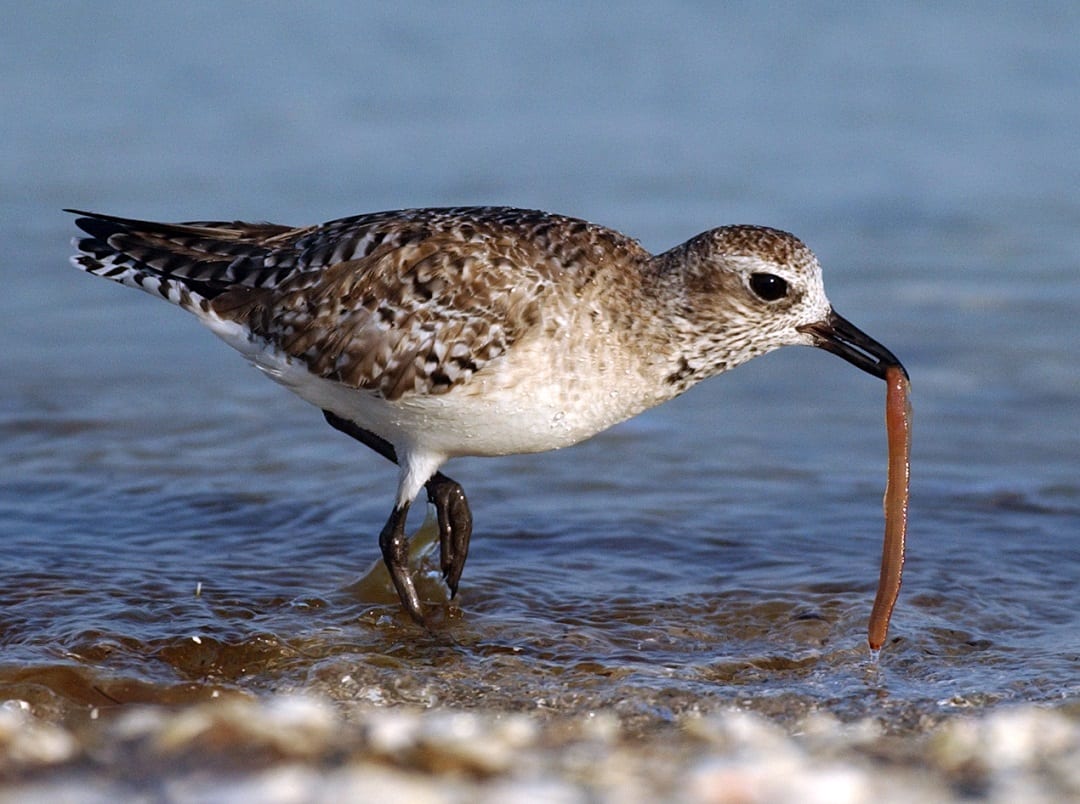16 species of shorebird, including several species that winter in Ireland and are monitored through the Irish Wetland Bird Survey (I-WeBS), have had their conservation status reclassified to a higher threat category in the latest IUCN Red List update.
The latest update to the IUCN Red List of Threatened Species™ reveals a highly concerning decline in populations of migratory shorebirds across the globe, with 16 species reclassified to higher threat categories1. Some populations of migratory shorebirds have decreased by more than a third.
Among the species that have experienced declines are Grey Plover, a species that winters in Ireland from Siberia. While it remains a widespread and abundant species, its status has been changed from “Least Concern” to “Vulnerable” in response to increasing evidence for rapid population declines over the past three generations (23 years), estimated to be more than 30%. The exact causes of these declines are unknown, but a myriad of plausible threats have been identified including habitat loss and degradation, disturbance and hunting.
The Dunlin, a winter visitor to our shores from Scandinavia to Siberia, has also been reclassified from “Least Concern” to “Near Threatened”. This small shorebird has declined moderately rapidly according to recent monitoring. There is considerable uncertainty in the rate of the reduction, but it is suspected to fall between 20-29% over the past three generations and for the period projected to the near future, according to the IUCN report. At present, the population size and range remain large but due to the rate of population reduction, the species is now listed as “Near Threatened”.
The Ruddy Turnstone has also been reclassified in the latest IUCN report, from “Least Concern” to “Near Threatened”. A winter visitor to Ireland from northeast Canada and northern Greenland, this bird is a widespread species with a global population of 750,000-1,750,000 mature individuals. However, the Ruddy Turnstone faces a myriad of threats across its vast range, including habitat loss and degradation, illegal killing, disturbance and possibly reduced breeding productivity caused by factors associated with climate change. While the relative importance of these threats is unknown, monitoring data in several parts of its range, particularly in North America, indicate locally rapid declines over the past three generations. The global population is thought to have declined moderately rapidly, at a rate 20-29% over the past three generations (18 years).
Several species of sandpiper have been reclassified to higher threat categories, including the Curlew Sandpiper – a scarce passage migrant to Ireland. Recent monitoring data have shown that this widely distributed species has probably declined by 30-49% over the past three generations (15 years). The exact causes of declines are unknown, but are likely to include habitat loss and degradation (particularly on stopover and wintering grounds) and climate change impacts (particularly affecting breeding productivity), as well as disturbance and hunting. As a result of these population changes, the Curlew Sandpiper has been reclassified from “Near Threatened” to “Vulnerable”.
Birds are important indicators of the state of nature: they occur almost everywhere, their behaviours and ecology often mirror other groups of species, they are extremely well studied, and they are responsive to environmental change. Many migratory birds follow specific routes called flyways, stopping at various sites along the way to rest and feed. This makes them especially at risk from threats like habitat loss and climate change.
Science shows the huge negative impact of declining species populations, with whole ecosystems and food chains being disrupted as a result. As birds migrate beyond borders, the new update highlights a need for more collaboration from governments without delay to reverse the losses of migratory birds.
Together with BirdLife International and our BirdLife partners across the globe, BirdWatch Ireland is calling on governments at CBD COP16 to step up urgent actions for species to reverse declines and stop extinctions.
Martin Harper, CEO, BirdLife International said: “COP16 must be the catalyst for governments to back up commitments made two years ago with meaningful action to reverse the catastrophic declines in species populations. This means more action to bolster efforts to recover threatened species, more action to protect and restore more land, freshwater and sea, and more action to transform our food, energy and industrial systems – backed up by the necessary funding. The decline of migratory birds, which connect people across countries and continents, is a powerful symbol of how we are currently failing.”
We only have five more years of this defining decade. CBD COP16 is the moment to galvanise action to halt and reverse nature loss by 2030. Plummeting migratory bird populations signal that nature is in crisis. When we lose species, our future is compromised. Nature loss can be reversed but extinctions cannot.


